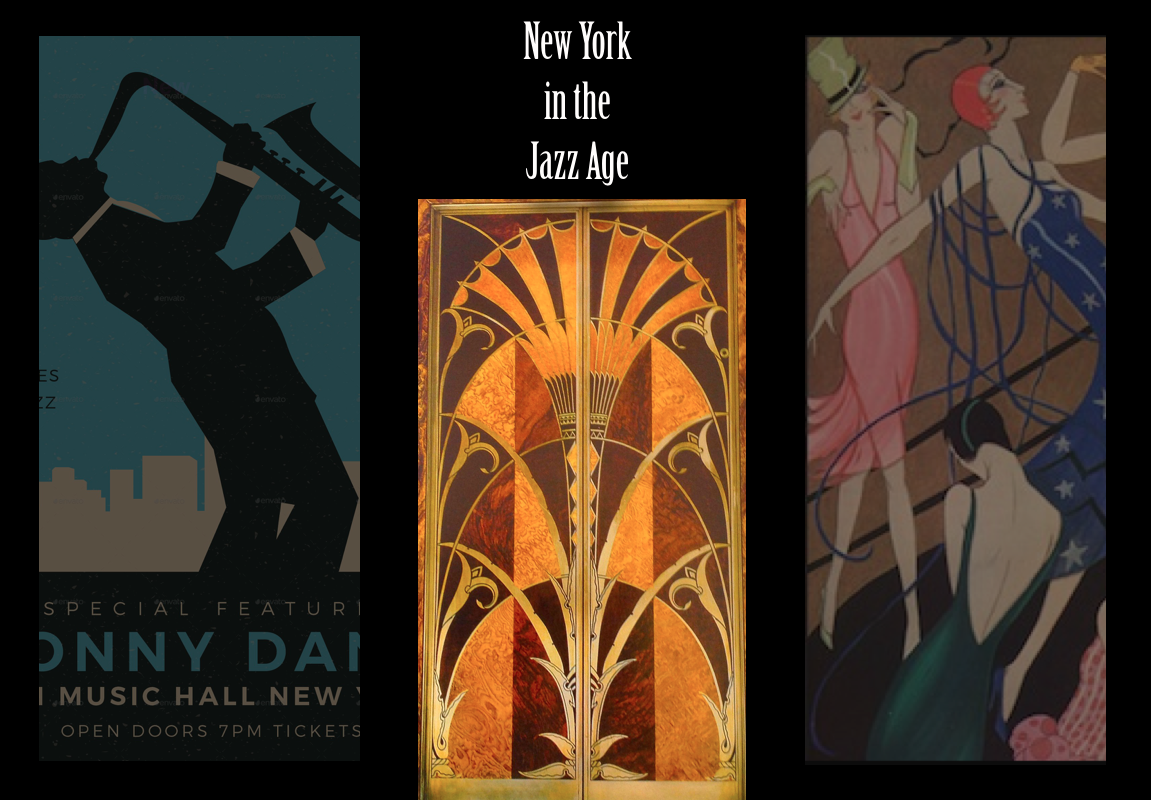- Location: Chapel Arts, Knapp Rd, Cheltenham GL50 3QQ
- Date: 16.04.19 | 10:30am
- Book Now: Please note that this is a members event for The Arts Society
- Contact: Alex Davies: alexcassie.davies@btinternet.com
‘Bebop to Bernstein: New York in the Jazz Age’

The Jazz Age is synonymous with the 1920s in the US; a time of carefree hedonism, wealth, freedom, and youthful exuberance reflected in the novels of writers such as F. Scott Fitzgerald. The Prohibition period 1920-33 in the US resulted in illicit speakeasies as venues for jazz, hence it became associated with immoral attitudes. Jazz emerged in the 1920s during the early days of the Harlem Renaissance – the cultural flowering of African American art & music. Musically complex, jazz is varied and hard to define, yet commonly comprising improvisation, syncopation, polyrhythm and ‘blue notes.’ Its roots can be found in Blues and Ragtime, and West African Atlantic slave trade songs devised to boost morale in the form of call-and-response. Furthermore, Siberian villagers used jazz to scare away bears; the villagers striking pots and pans to beat out alacritous rhythms as a form of deterrent. The Jazz Age in New York was also the age of speed epitomised by the Art Deco style of the zeitgeist, the ‘roaring twenties.’
It was in this climate that the seminal musician Leonard ‘Lenny’ Bernstein emerged as a multifariously talented musician who went on to collaborate with Stephen Sondheim to write West Side Story. The musical plays on social schism: The Jets vs The Sharks, which recalls Shakespeare’s rift between the Montagues & Capulets in Romeo & Juliet.
The whole period in question straddling Bernstein’s prolific career was a turbulent one in the US, with the Wall Street Crash and the Great Depression followed by Roosevelt’s New Deal Scheme. Jackson Pollock and the Action Painters of Abstract Expressionism turned to depicting the psychological forces in the age of Freud and Jung in a less descriptive or naturalistic way, as the times were too disturbed to depict literally. This may account for the layered, confusing skeins of uncertainty which also serve to embody the then lack of national identity.
Come and explore this fascinating period of parties and paradox, Bebop and Bernstein and depression and Deco.

